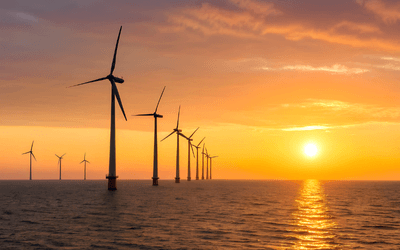The energy sector has long been male dominated, overlooking the educational standard and skillset women may bring to the sector. However, with the ever-increasing demand for jobs within the sector, due to ongoing projects supporting sustainable, renewable energy, the female presence within the industry is progressing. With women now making up 39% of the global workforce in the energy sector the imbalance is being addressed; however, only 16% of that covers the traditional energy sector.
How can gender diversity benefit your organisation
Focusing on gender diversity can provide your organisation several benefits ranging from attracting the best talent, to financial outperformance. Diversifying your workforce will ensure you have the highest calibre of talent strengthening your teams. Furthermore, this will enhance the level of innovation and decision making within the organisation, meaning that you can gather more comprehensive analysis of complex issues and the development of innovative solutions.
Promoting gender diversity for your organisation within the energy sector can improve company reputation too, as companies who actively promote this balance are more likely to impress stakeholders with their forward thinking. This includes customers, investors and the public. Additionally, diversifying your workforce will promote financial outperformance as gender diversity correlates to higher market value as it is widely accepted and believed to be of high importance.
Strategies to balance the gender gap within the Energy Sector
So, how can companies help make a difference to fixing the imbalance between men and women within the energy sector? Below we look at a variety of ways your business can ensure a more inclusive future for your workforce.
Educational Outreach
Addressing the gender gap in the energy sector begins with inspiring as many people – male and female – to want to pursue a career within the industry as possible.
By collaborating with educational institutions, you can expand your outreach to careers fairs, mentoring, educational partnerships and apprenticeship programmes to inspire the next generation of industry leaders. Additionally, you will help to raise awareness of the opportunities available to both women and men within the industry.
It is imperative to inspire the younger generation. Connecting your business with schools, colleges and universities, and encouraging your female employees and leaders to mentor students, will prove vital for fostering a supportive environment for women interested in STEM roles and broaden opportunities for different talent pools.
Equal Pay
Despite an equal skillset ithas been found that women’s wages within the energy sector are almost 20% lower than male wages. This disadvantage for women causes a gap within the industry, as it makes roles in the industry less appealing to females – making it more difficult to recruit female talent.
Achieving pay equity and providing equal advancement opportunities for both women and men is essential for creating a diverse workforce and closing the gap within the energy sector. Organisations should carry out regular pay equity audits in order to identify any pay disparities and abolish inequality.
Women should be paid based upon their skillset and efforts within the industry, therefore a transparent promotion and advancement criteria should be established, as well as adequate training opportunities provided, to help women excel within their career and be open to equal advancement opportunities based upon their efforts.
Flexible Arrangements
Diversifying talent acquisition within the energy sector is vital to the success of the industry, therefore it is important to allow for flexible arrangements for women to cater for specific needs. This includes comprehensive maternity leave policies, childcare support and flexible working arrangements.
Support for women from their organisation is essential for ensuring a positive workforce. Women are more likely to consider the flexible working options offered by an organisation and hold it in high regard when deciding their career path. This means women are less likely to seek a career with an organisation who does not support the flexibility needed to cater to their unique challenges, creating a gap in the diversity of the workforce within the energy sector.
Diversity and Inclusion Policies
Diversity and inclusion policies are a fundamental step, for any organisation, towards making the work place a safe and professional environment for all workers to thrive in their careers. Therefore, it is essential that diversity and inclusion is considered when taking on employees.
Organisations should set up appropriate guidelines which support equal opportunities for all workers to progress based on their standard of work and regardless of their gender. Furthermore, advanced mechanisms for reporting discrimination and harassment should be set up within the workplace to strive for a safe and inclusive environment for all employees.
In summary…
There are many actions in which an organisation can take in an effort to address the gender gap within the energy sector, including educational outreach, providing equal pay, conducting flexible arrangements for employees, and implementing diversity and inclusion policies. Integrating these practices and policies within an organisation will provide you with several benefits ranging from attracting the best talent, to financial outperformance.
Furthermore, bridging the gender gap within an organisation will help to support the demand for jobs within the energy sector and fill these roles with the highest calibre of talent regardless of their gender. In turn, this will ensure that valued time and attention can be directed towards upcoming renewable energy projects and the ongoing race against global warming.









